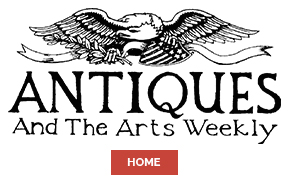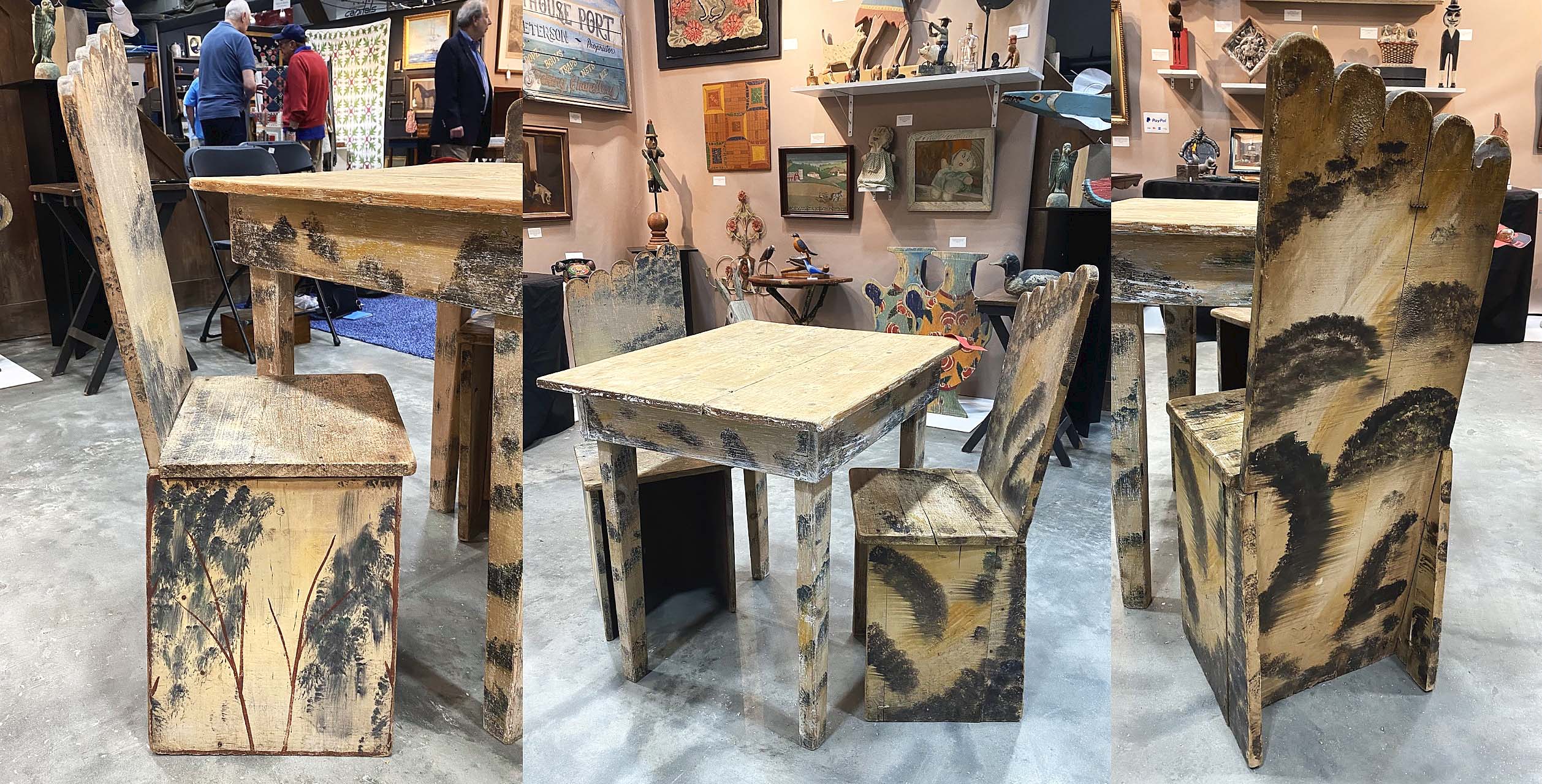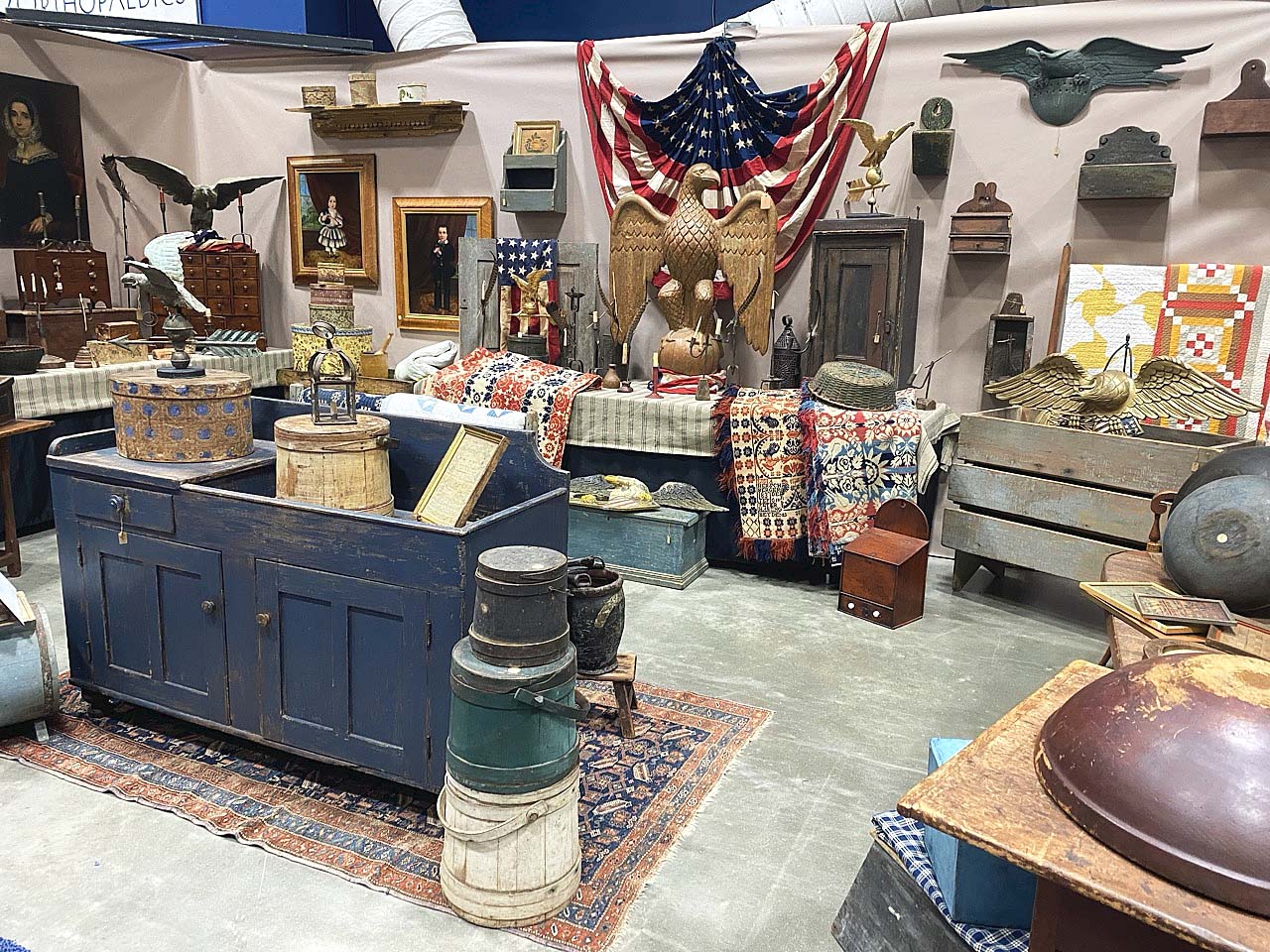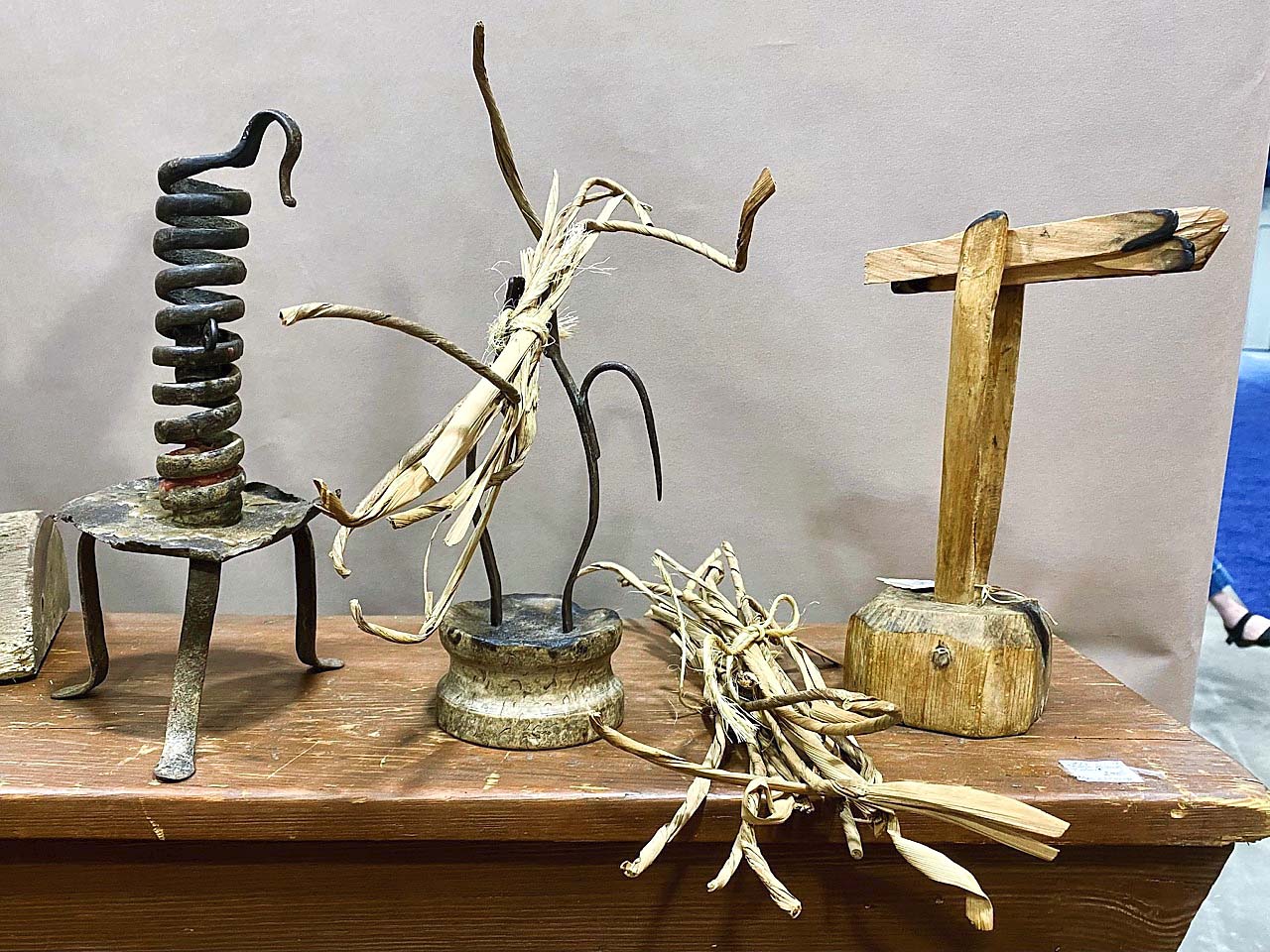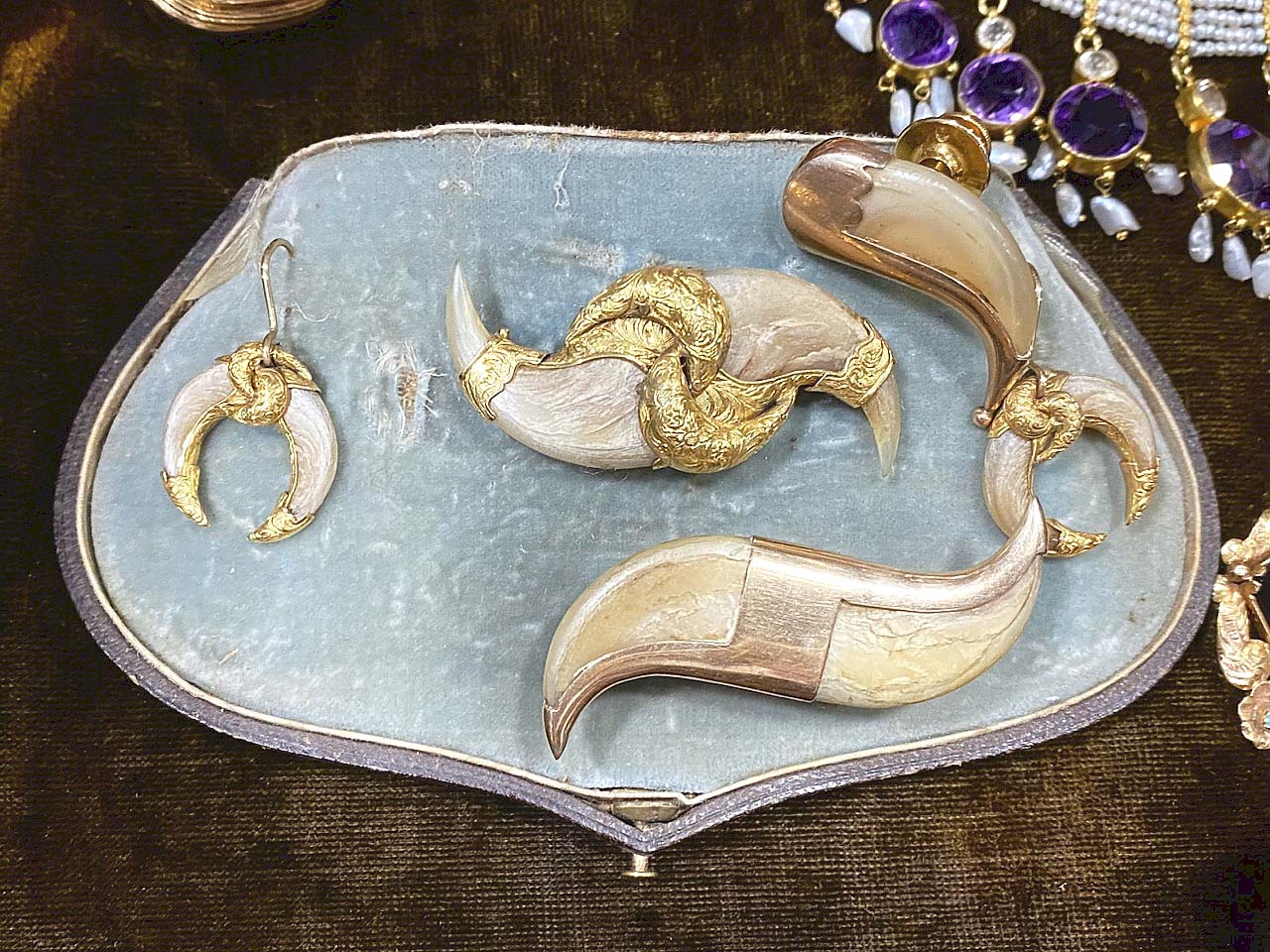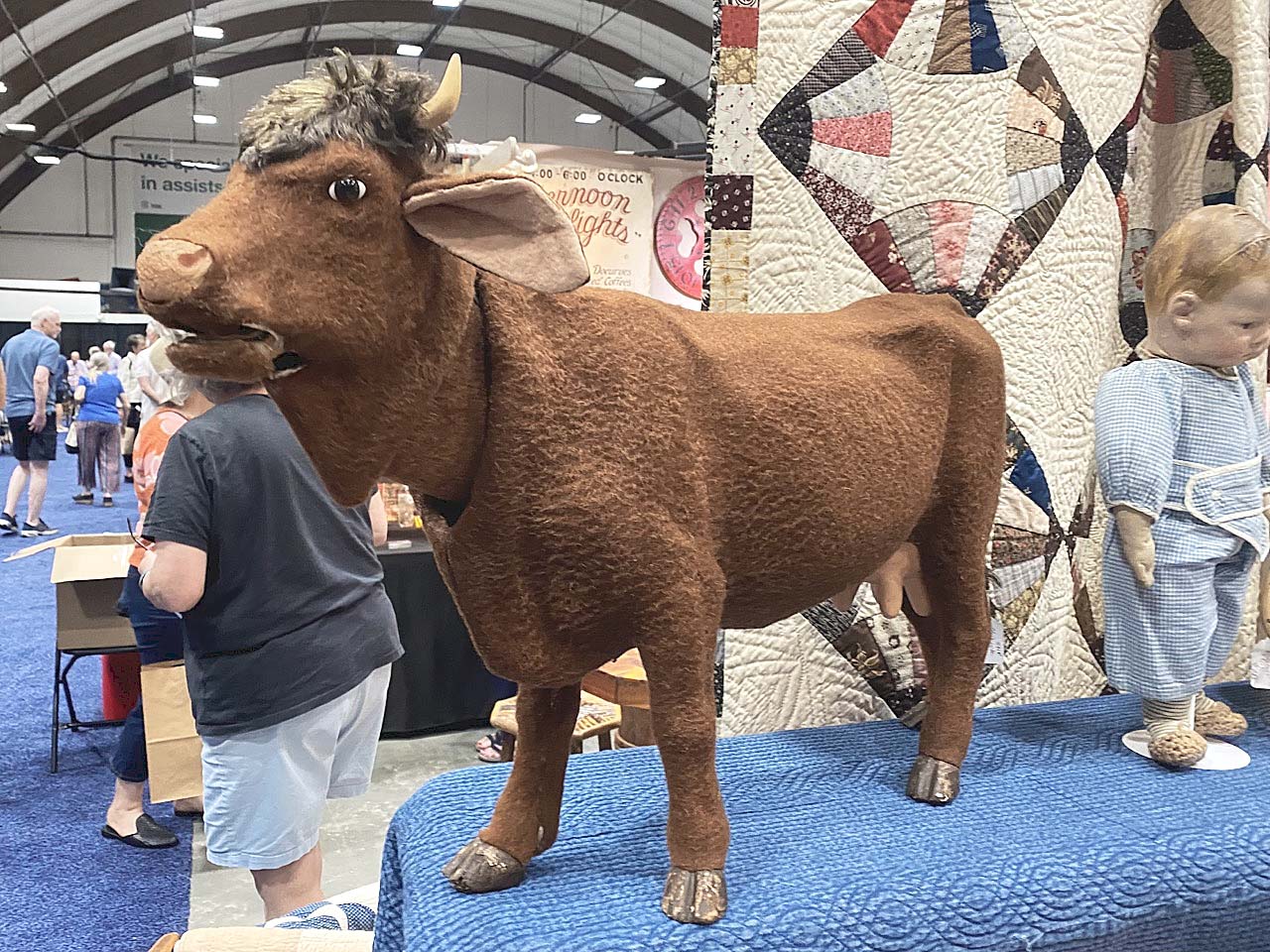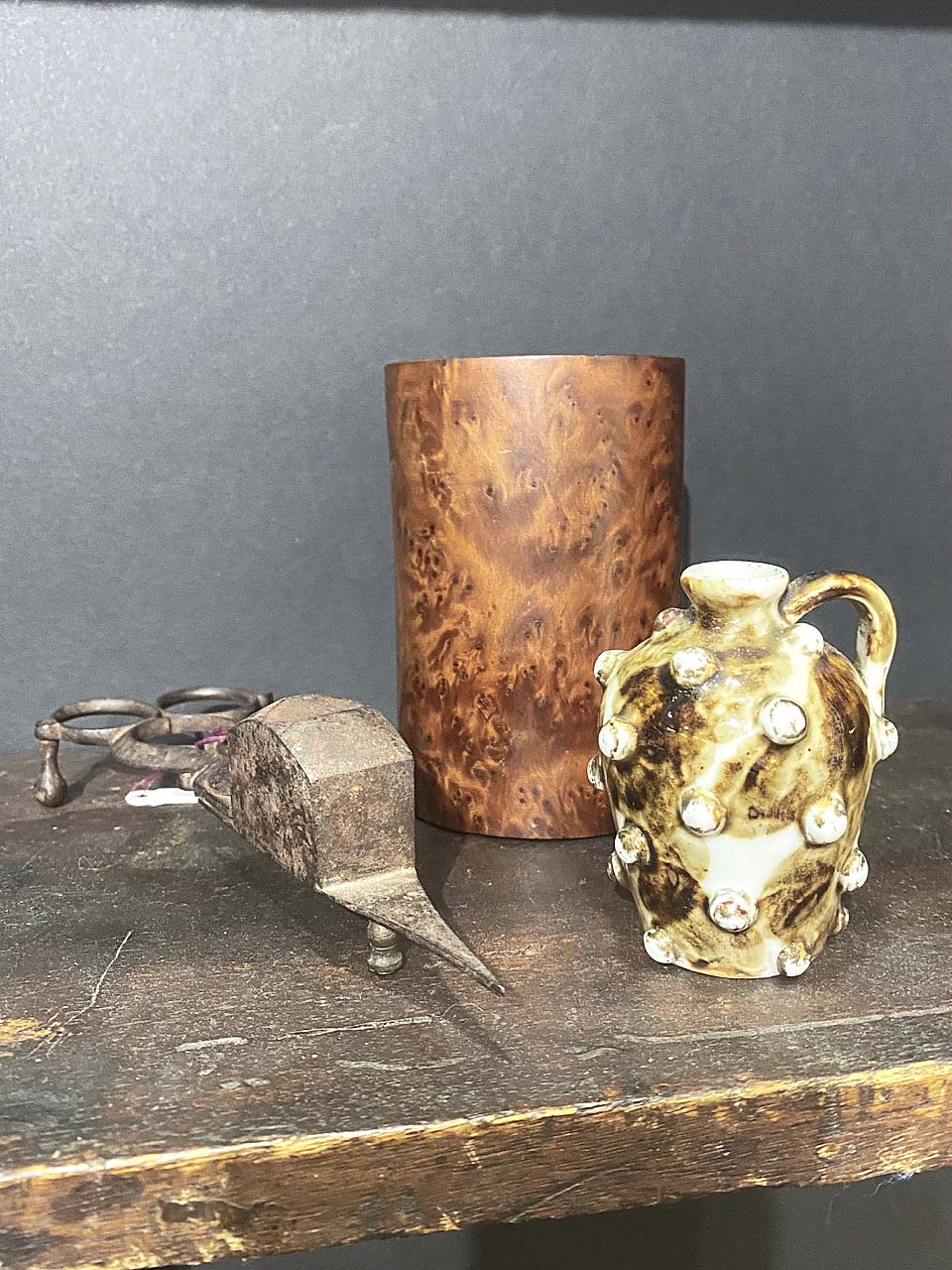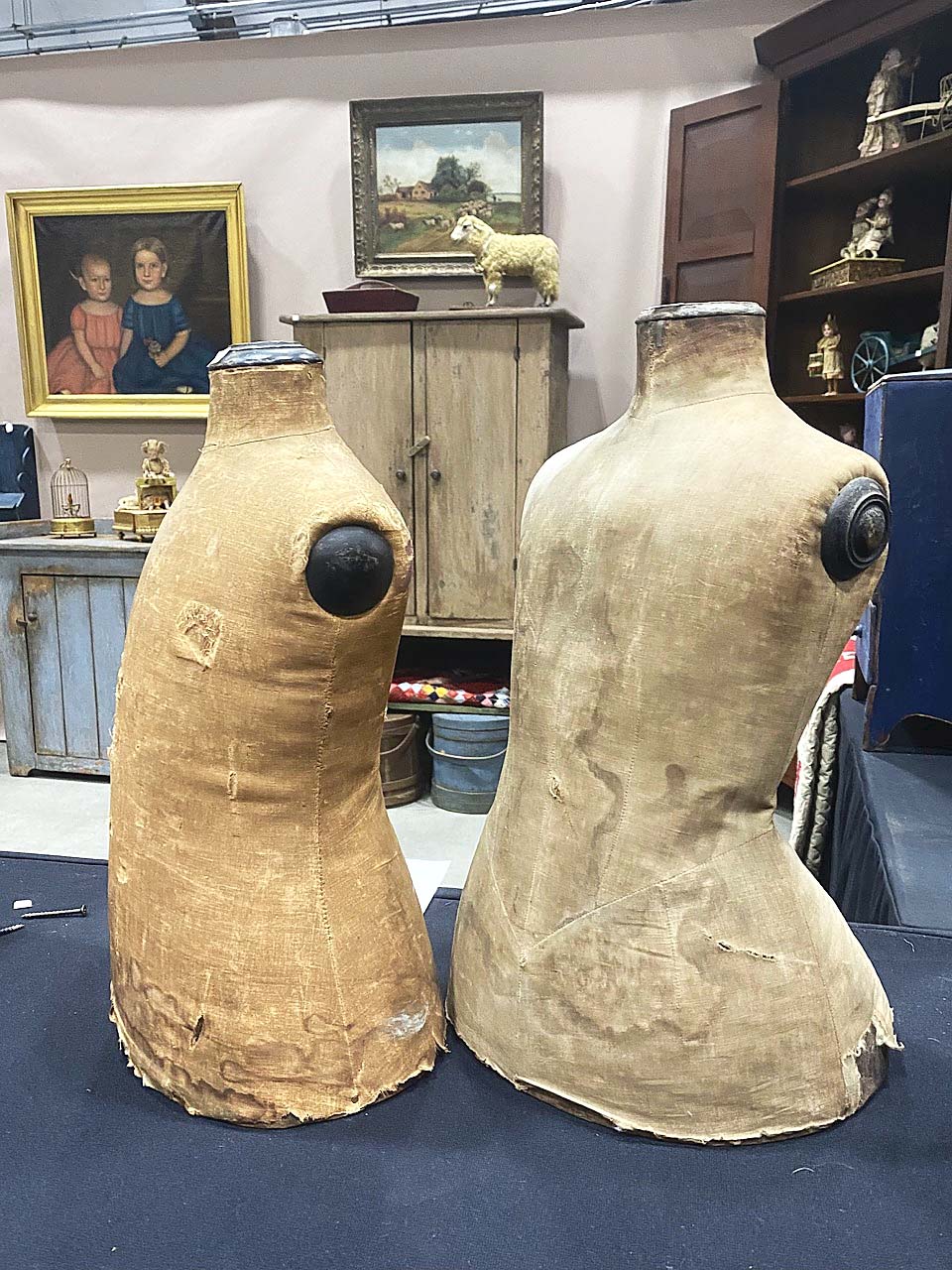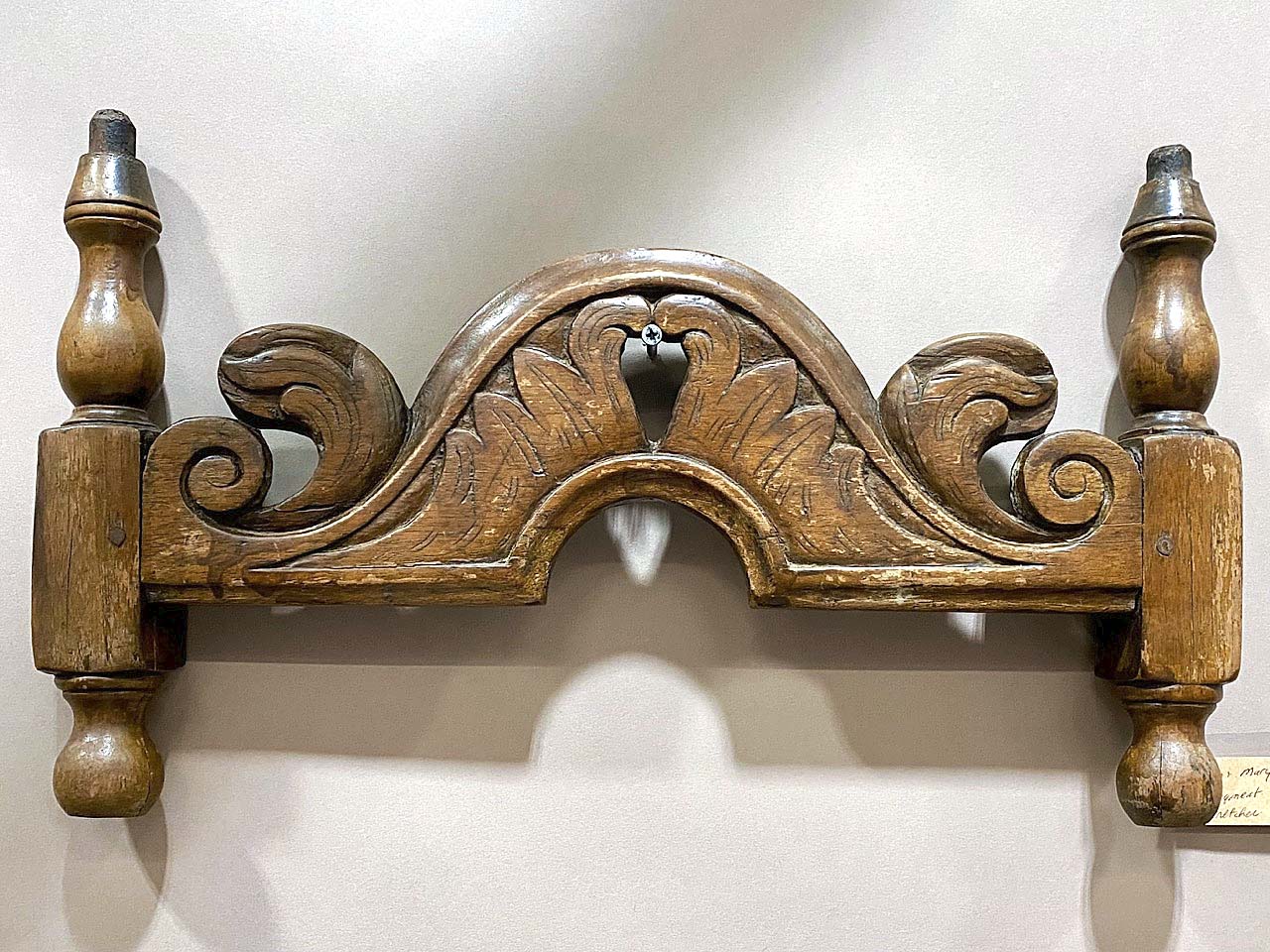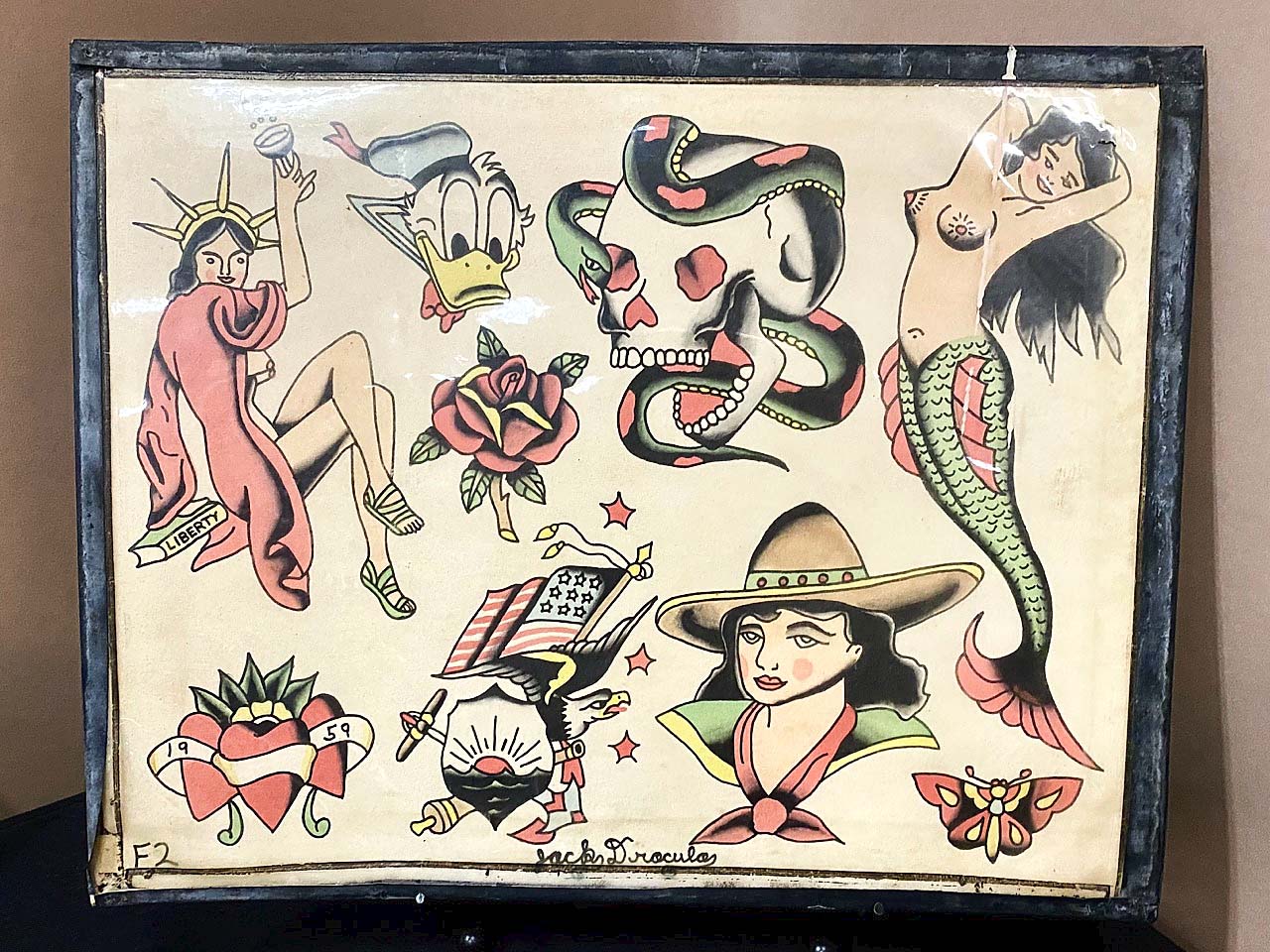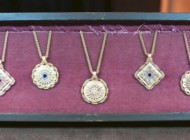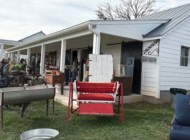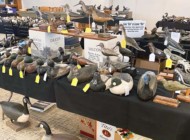
Three rows of booths filled with Americana and more at the Douglas N. Everett Arena, represented by dealers from all over the United States.
Review & Onsite Photos by Z.G. Burnett
CONCORD, N.H. — The Douglas N. Everett Arena hosted the Americana Celebration Antique Show on Tuesday, August 5, managed by Peter Mavris Antique Shows. More than 50 dealers represented four centuries of primarily American art, furniture and decor, along with European, Asian and African antiques. Folding seats were ready outside for those who lined up ahead of the of early buying entry time of 8 am. Customers descended on packed booths, and well-prepared vendors restocked their wares throughout the day. Peter Mavris greeted the crowd up front and later reported a healthy gate that was similar to last year’s numbers. “The show was a huge success,” he continued. “Dealers were thrilled with their sales and post-show sales have also been good.”
For buyers and sellers alike, antiques shows are as much about “the thrill of the find” as growing their collection. Objects from anonymous or little-known makers rarely come with partial histories, but Jane Ashton Antiques, Princeton, N.J., brought a painting with full documentation and photographs. The still life of a battered straw hat filled with eggs, surrounded by two dandelions and a turkey feather atop a printed red cloth, was signed by Emma Tuttle and inscribed, “To Rose, April 27 1877.” Rose was one of three children born to the artist, Emma Rood Tuttle (1839-1916) and her husband, Hudson. Born in Braceville, Ohio, Emma attended The Western Reserve Eclectic Institute (later Hiram College) in Farmington, Ohio, while future American president James A. Garfield acted as the head of school. The Tuttles found common interest in creative endeavors and spiritualism and married when Emma was 18 years old. Both were painters and writers who went on to publish several short stories and volumes of poetry. Emma was even known in Ohio for her dramatic readings and composition. Ashton acquired the painting from a dealer friend who, in turn, bought it from the estate of Robert Crocker Howe, Cortland, N.Y., who was part of the Crocker Dairy family. Howe was Rose Tuttle Crocker’s great-grandson, and included photographs of Emma, Rose, and her other daughter, Clair, to accompany the painting.

Paintings with complete provenance are uncommon, and this still life with eggs from Jane Ashton Antiques had a full history including images of the women of the Tuttle family. Princeton, N.J.
Girard, Ohio-based dealer L.K. Spowart Antiques displayed another well-documented object — well, a piece of the object. Mounted on her booth’s wall was what appeared to be the footboard of a finely carved doll’s bed. However, Spowart presented a photocopy of Figure 72 from Benno M. Forman’s American Seating Furniture, 1630-1730: An Interpretive Catalogue (1988) that showed a carved top, banister-back elbow chair with a wooden bottom. Probably carved in Philadelphia circa 1710-30, the chair’s front stretcher showed the same form and similar decoration as the alleged footboard in her booth. Even Forman described the chair as “peculiar” for Philadelphia. From page 328, “Some of the turned ornament, particularly the stretches, hints at Scandinavian or North German influence… [but without] question, the maker of the chair trained in northern England, probably Lancashire, where the same style of carving is found on joined back stools.” Forman did not discount the influence of northern European turning techniques following the maker’s arrival in the colony. The stretcher in question was still available from Spowart.
One object was so large that it required a separate display space away from the booth of Dave and Bonnie Ferriss, Lake Luzerne, N.Y. For some, the idea of a quilt rack may summon a three-by-four-foot standing frame to display a great-aunt’s handiwork. However, this Nineteenth Century rack was used for the act of quilting and was long enough to accommodate more than one person working on the same project. It came from “the middle of New York state” with an original reddish-brown painted surface, and the supports were a rare, ornately carved form for such a utilitarian object. Bonnie later reported that they had a very good show, but the quilting rack had not sold by press time.
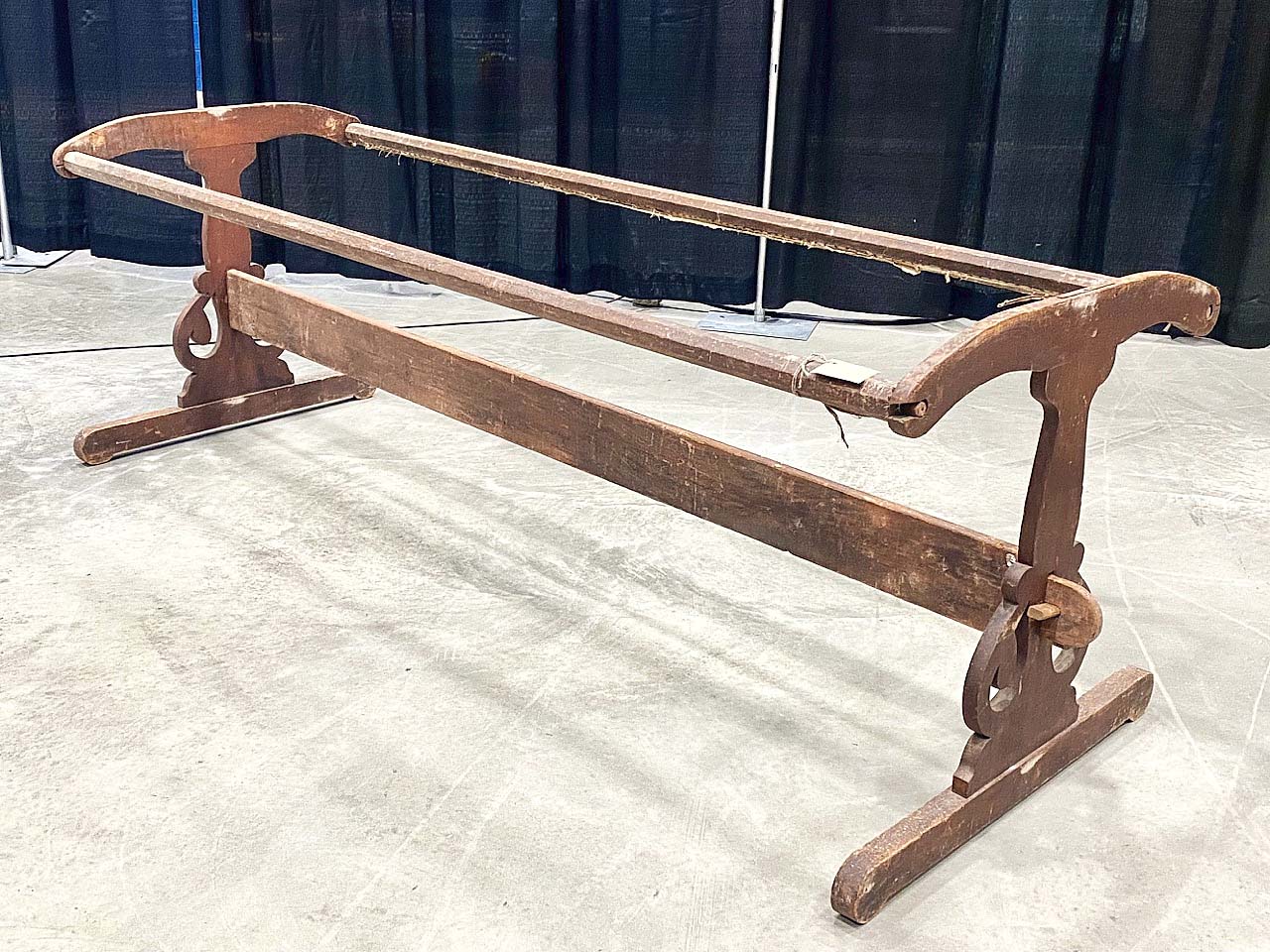
Too big to fit in the booth of Dave and Bonnie Ferriss, this rare, ornately carved quilting rack retained its original finish and was found “in the middle of New York state.” Lake Luzerne, N.Y.
In the early buying hour, Francis Crespo, Lancaster, Penn., sold a later set of two chairs and a table. Dated circa 1910-30, it was found on a farm outside of Cedar Rapids, Iowa, and it’s unclear if the carpenter was the same person who painted the table and chairs. Some customers suggested that the curious shape of the back supports resembled feet; however, that might be in contrast with the sponge-painted tree designs on the surface. The paint’s wear did provide some clues about how the set was used. Crespo believed that it might have been a desk instead of a shared table, as one of the chairs showed significantly more paint loss than the other. Either way, both table and chairs were still sturdy and might last another hundred years with the right care.
The show had more than a few surprises in store, including a number of automatic and coin-operated antiques. Jason Phillips, Rochester, N.H., went the extra mile with a “Wheel of Fortune” trade stimulator machine that told customers’ fortunes by inserting a nickel and pulling the lever. Popular in the late Nineteenth and early Twentieth Centuries, they would “stimulate trade” as games of chance — some players would receive small prizes, and some would not. This example would present a number that corresponded with a fortune on its placard, such as number 22, “Stubborn as a mule, but many noble traits. Success will be yours.” Others were more ominous, “Beware of your friend. Consider well, if he can keep thy secret.” Phillips brought nickels for customers to test their luck, and just the act of using the machine was fun enough despite whatever one’s fortune turned out to be.
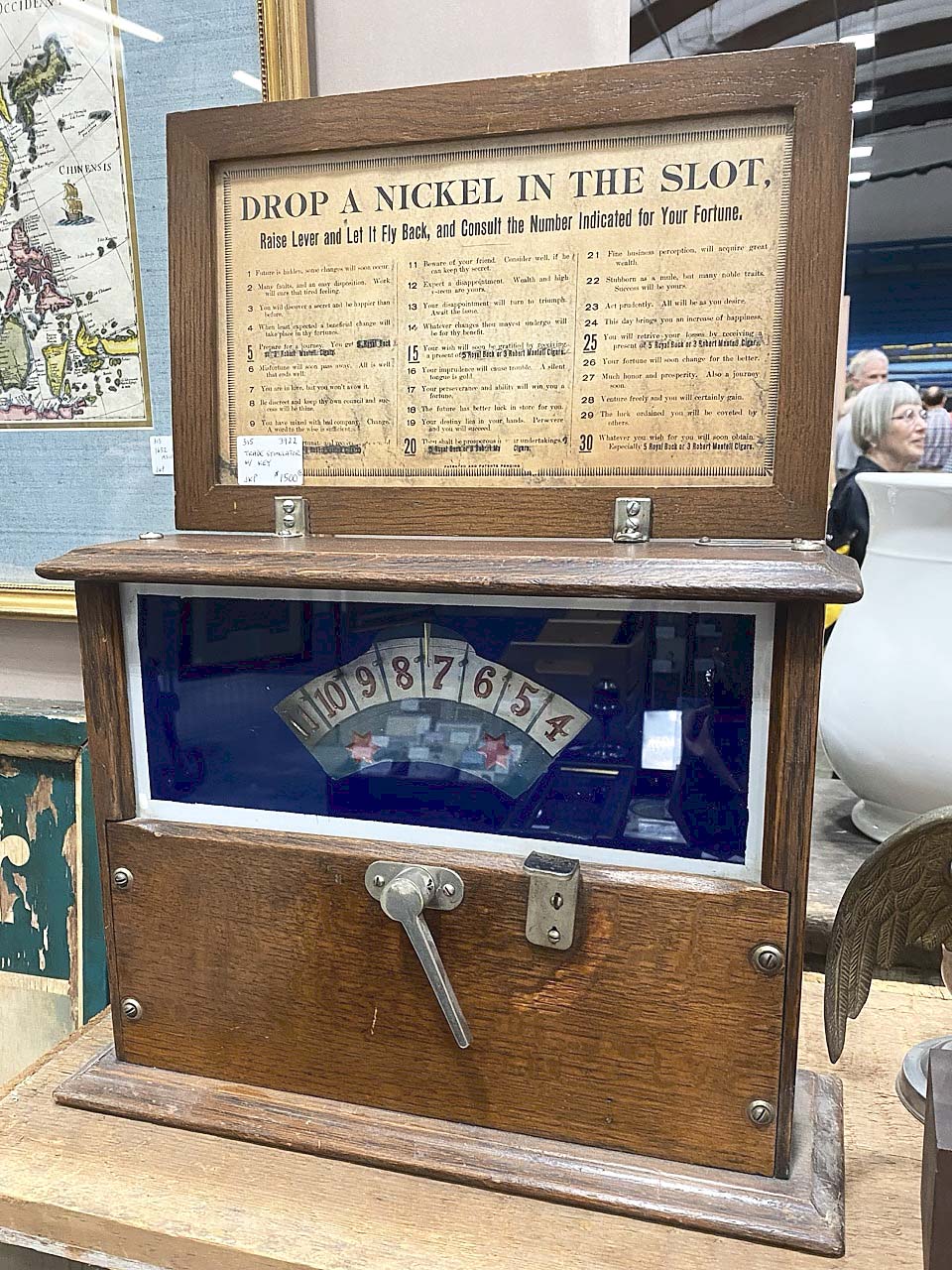
Jason Phillips brought a bag of nickels for customers to drop into this fully operational “Wheel of Fortune” trade stimulator from the early Twentieth Century. Rochester, N.H.
The definition of “Americana” has expanded as the decades move forward, and Bill and Lori Taylor, Boston, embraced this evolution by displaying an original tattoo flash sheet by Jack Dracula (American, 1935-2011). Born Martin Semnack in Brooklyn, N.Y., Dracula served in the United States Navy and received his first tattoo on Coney Island at age 19, then added more than 30 others in less than a year. At 21, he began his 50-year career and specialized in face tattoos at a time when having any visible ink could socially brand one as either a sailor or a criminal. Dracula was also a subject of photographer Diane Arbus in 1961, when he was performing in circus sideshows as “The Marked Man.” His work was a strong influence on what’s known today as the “American traditional” style, characterized by bold colors, black outlines and folk motifs or nautical imagery.
Peter Mavris Antique Shows’ annual September-April event series begins on September 28 at the Best Western Inn & Conference Center, 815 Lafayette Road, Hampton, N.H. For information, 207-608-3086 or www.petermavrisantiqueshows.com.
